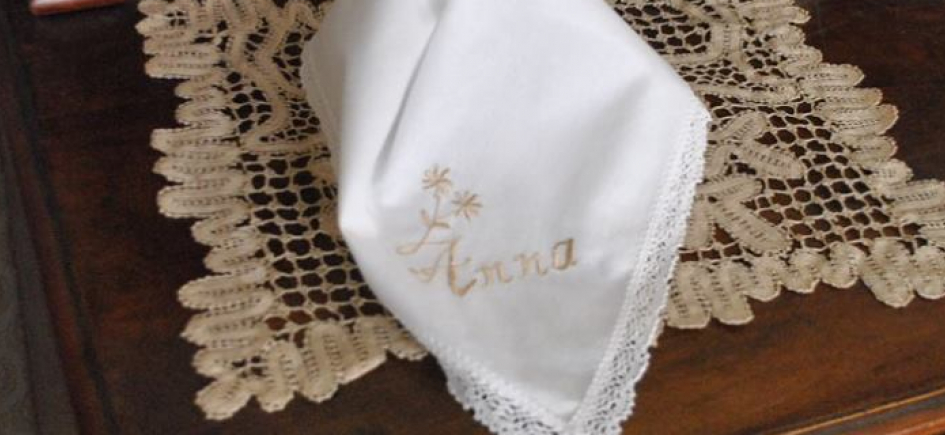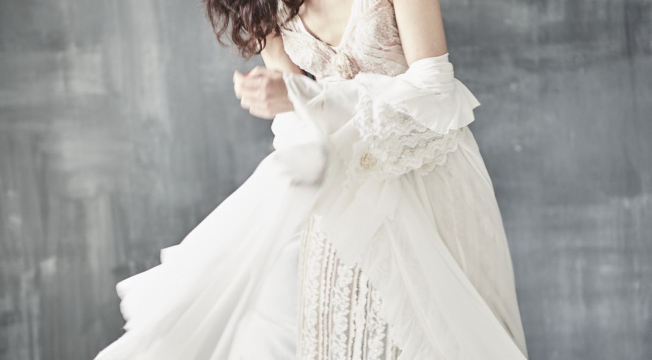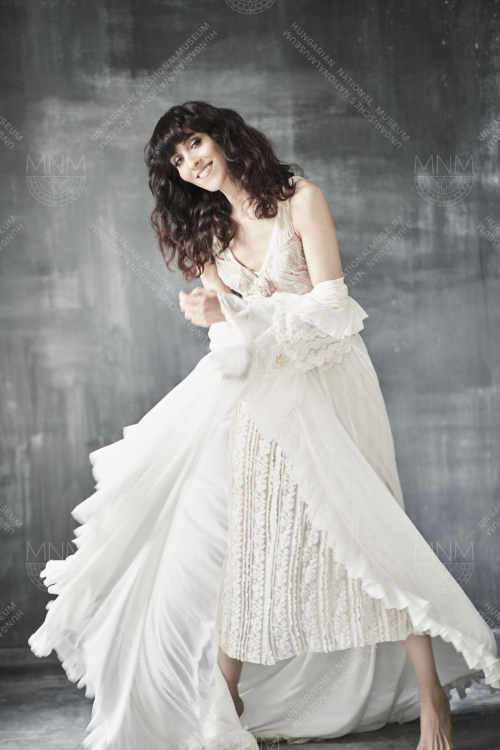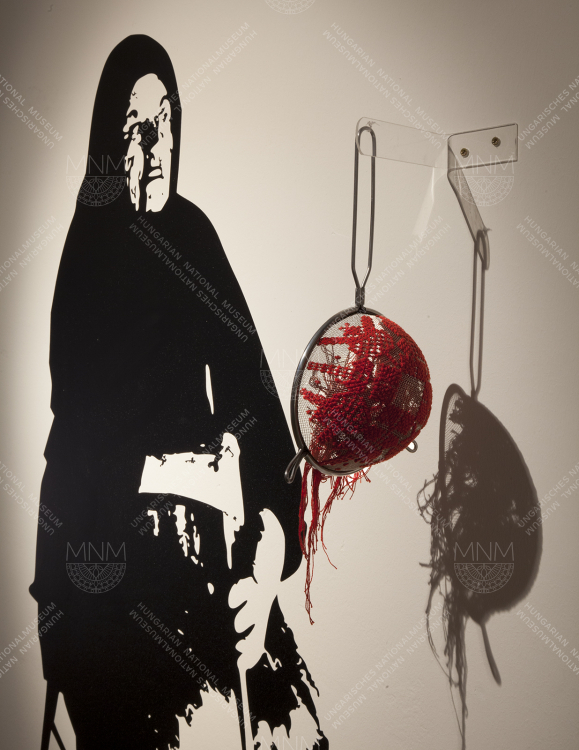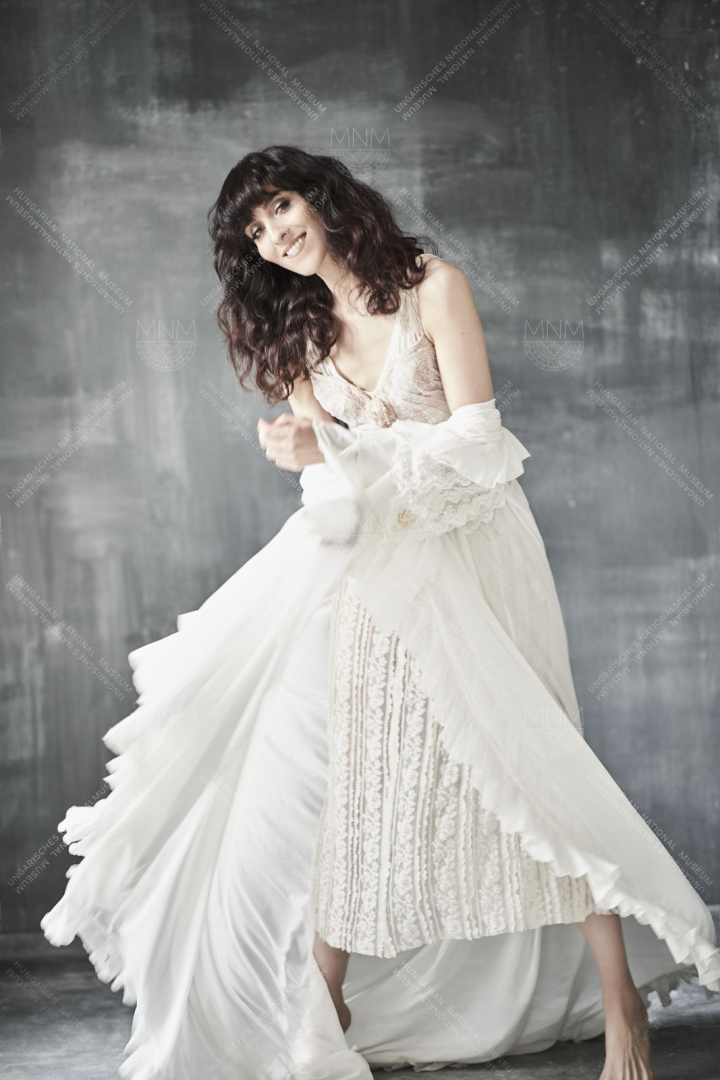
This exhibition stages fictional tales, scenes of imagination. This approach was inspired by the scholarly historical and ethnographical tradition which promotes that the lives and stories of common people can be best understood as footprints of the “big” history of events. The exhibition is in agreement with the museological practice to show objects and artefacts not necessarily based on their own history, but because they are suitable to illustrate the life-style, interior-decoration and traditional dressing of broader social classes.
The current display takes the visitor back to mid 20th century Székelyföld, into a society shaped by strict yet unwritten rules and habits; a society in which a fallen girl had no place left to stay. How might the fate of a young girl forced into marriage have looked like? How did the experiences of a maid differ or overlap with those of a factory worker? Was the people’s power really power? Last but not least, was solitude truly freedom? These are the issues explored in Anna`s fictive thoughts.

The Anna of our exhibition is not real; she is a product of imagination. A simple woman whose fate nonetheless was intrinsically shaped by local norms and habits as much as by world-politics. Importantly, she did not shape said history but was affected by it. The visitors are invited to immerse themselves into this world and person; to walk through this fictional life step by step, face Anna`s decisions and the triggered consequences. This exhibition is a series of questions; of “What could have been?...”
When an object enters a museum collection it inevitably gets ripped out from its organic context and receives a new symbolic meaning. Historical museums aspire to preserve as much as possible from those original, past layers of meaning and context and to pass these on with utmost authenticity.

This exhibition chose to follow another direction: instead of focusing on the history of particular objects it offers a fictional story. Thus the exhibited objects become parts of staged scenery intensifying the atmosphere of the story that could have happened just like that...
The object- and interior descriptions placed throughout the exhibition aim to help the visitor in unfolding the stage and in discovering the reality revealed by scholarly research.
The Hungarian National Museum by housing and presenting the exhibition of the Haáz Rezső Museum provides an occasion for a type of story-telling that brings to life the anonymous yet so familiar characters of the 20th century. It also invites visitors to face the question what they would have done in the face of such a dilemma.
For the complete experience please download the GuideNow mobile application and in it the story of Anna. If you have no smartphone you can hire one free of charge in the information desk
Android: https://play.google.com/store/apps/details?id=hu.guidenow
iOS: https://itunes.apple.com/hu/app/guide-now/id1187900163?mt=8
IMPRESSZUM
Anna. Változatok székely asszonysorsra │ Anna. Fictitious Female Fates from Székelyföld
Magyar Nemzeti Múzeum
2017. november 19. – 2018. április
A kiállítás kurátorai │ Exhibition curators
Kinda István (Székely Nemzeti Múzeum)
Miklós Zoltán (Haáz Rezső Múzeum)
Salló Szilárd (Hargita Megyei Hagyományőrzési Forrásközpont)
Szőcs Levente (Tarisznyás Márton Múzeum)ű
Vajda András (Sapientia Erdélyi Magyar Tudományegyetem)
Kemenczei Ágota
Chapó Ibolya
Peterdi Vera
Anna magyar hangja │ Voice of Anna (Hungarian)
Bocskor Bíborka
Anna angol hangja │Voice of Anna (English)
Fazakas Ágnes
Dramaturg
Bonczidai Éva
Bevezető szöveg │Introduction
Kuti Klára
Kiállítás szervezés │ Exhibition coordination
Bárd Edit
Kiállítás tervezés │ Exhibition Design
Bak Andrea, Baróti Hunor, Csáti Csaba, Marosfalvi Ákos, Miklovics Gyula,
Vári Ágnes
Idea Plus (Könczey Elemér, Szentes Zágon) - Kolozsvár
Műtárgyvédelem │ Conservation
Földessy Péter, Antal Marianna, Madarászné Gorej Judit, Németh Norbert, Kiss Mária, Sipos Enikő, Zámboriné Fikó Katalin, Mátyás Eszter, Gulyás Csilla
Audiovizuális technika, multimédia │ Multimedia
Marton Ferenc
Audioguide, mobilalkalmazás │Audioguide, mobile application
Guidenow, Szabó Gábor
Angol fordítás │ English translation
Scarlett Kelety (hang/voice)
Fazakas Ágnes (írott szövegek/written)
Kommunikáció, PR és marketing │ Marketing and communication
Berényi Marianna, Szily Marianna, Urbán Franciska
Múzeumpedagógia │ Museum pedagogy
Kenesei Zsófia Orsolya, Suba Eszter, Vattay Liliána
Tárlatvezetés, programok │Programmes, guided tours
Bittera Éva, Bayer Árpád, Kapitány Regina, Tolnai-Pálóczy Enikő
Rendezvényszervezők │Event organizers
Kántor Judit, Sóki Dia
Pénzügyi szervezés │ Financial coordination
Zsurki Attila, Bitainé Kovács Andrea
Biztonságtechnika │ Security
Kajó Éva
Műszaki munkatársak │ Technical assistants
Frankovics Tibor, Bernáth Károly, Csapai Péter, Dancza István, Gál Marcell, Hlács László, Józsa Károly, Kazi János, Kibédi Olivér, Kis András, Sógor László, Széplaki Miklós, Tóth-Varga Linda
A kiállítás létrejöttéhez nyújtott segítségükért, támogatásukért fogadják köszönetünket │ Special thanks to
Bocskor Bíborka
A Petőfi Irodalmi Múzeum Médiatár munkatársai: Hegyi Katalin és Szabó Attila
A Magyar Nemzeti Múzeum Történeti Tárának munkatársai: Dragan Traian, Dávid Ákosné, Ridovics Anna, Simonovics Ildikó









